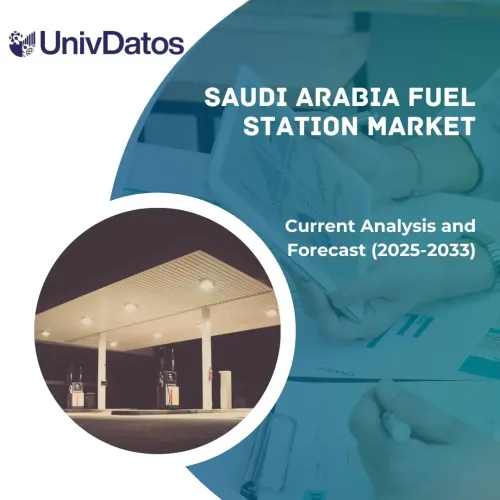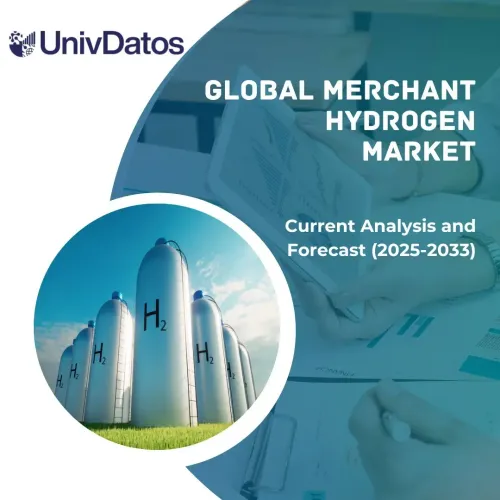Рынок технологий улавливания, утилизации и хранения углерода (CCUS): текущий анализ и прогноз (2022-2028 гг.)
Упор на технологии (улавливание до сжигания, улавливание при кислородном сжигании, улавливание после сжигания); Источник (нефть и газ, электроэнергетика, химическая промышленность, тяжелая промышленность, водород); Конечный потребитель (биологический, минерализация, пищевая промышленность); и Регион/Страна
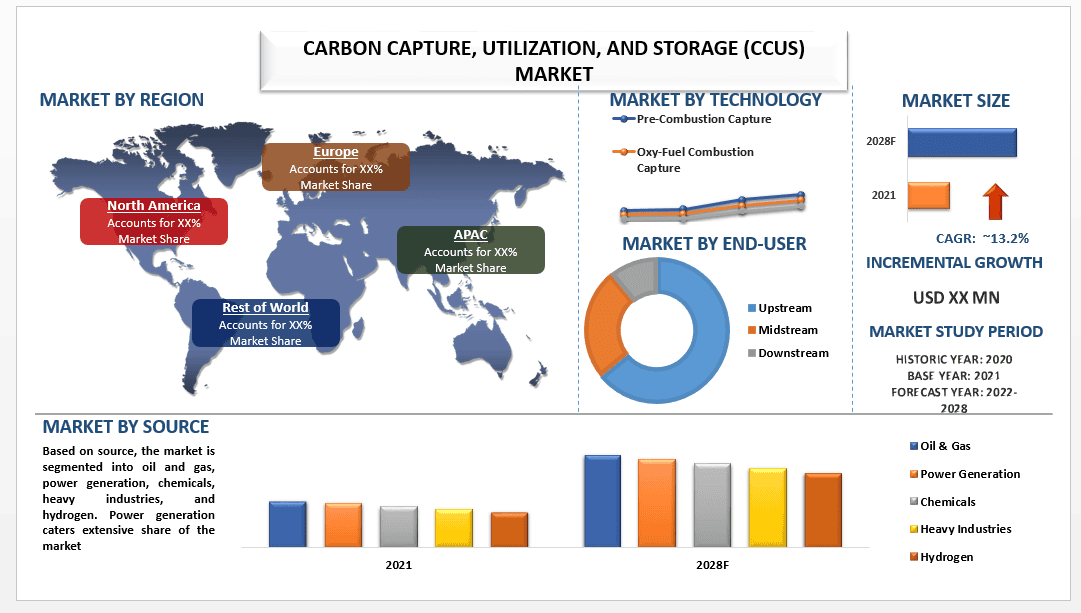
Ожидается, что рынок Carbon Capture, Utilization, and Storage будет расти со значительным среднегодовым темпом роста в 13,2% в течение прогнозируемого периода из-за растущей потребности в достижении целевого показателя нулевых выбросов; страны по всему миру работают над улавливанием выбросов углерода с помощью технологии CCUS. Более того, для различных промышленных процессов, таких как производство стали и цемента, CCUS в настоящее время является наиболее эффективной и действенной технологией для достижения значительного сокращения выбросов CO2. CO2, улавливаемый на промышленном объекте, сжимается и транспортируется по морю или по трубопроводу к геологическому образованию глубоко под землей для постоянного хранения. В качестве альтернативы, CO2 можно использовать для производства полезных продуктов, таких как строительные материалы или потребительские товары.
Кроме того, ключевые игроки рынка также запускают новые продукты и технологии на рынке для эффективного улавливания и хранения углерода. Например: в мае 2022 года компания Aker Carbon Capture начала строительство своей модульной установки для улавливания углерода Just Catch™ на мусороперерабатывающем заводе Twence в Хенгело, Нидерланды.
Некоторые из основных игроков, работающих на рынке, включают Fluor Corporation, ExxonMobil Corporation, Linde plc, Royal Dutch Shell, Mitsubishi Heavy Industries, Ltd, JGC Holdings Corporation, Equinor ASA, Schlumberger Limited, Aker Carbon Capture, Carbon Clean Solutions Limited.
Эти игроки предпринимают несколько слияний и поглощений, а также партнерств, чтобы предоставить клиентам высокотехнологичные и инновационные продукты/технологии.
Аналитические выводы, представленные в отчете
"Среди технологий сегмент после сжигания занимал доминирующую долю рынка в 2021 году"
Основываясь на технологии, после сжигания занимает значительную долю рынка и, как ожидается, будет расти значительными темпами и в прогнозируемый период. Системы после сжигания являются наиболее зрелой технологией улавливания и, как ожидается, будут модернизированы на современных и эффективных тепловых электростанциях. Улавливание после сжигания может быть модернизировано практически на любом существующем заводе с большим и устойчивым источником CO2 путем добавления процесса улавливания к контуру отходящих газов. Более того, из-за растущей потребности в улавливании углерода ключевые игроки объединяются для разработки технологически продвинутых решений для улавливания после сжигания. Например: RWE Power, BASF и Linde объединились и объединили усилия для разработки и продвижения технологий PCC.
"Среди источников, производство электроэнергии занимало большую часть рынка в 2021 году"
Основываясь на источнике, рынок сегментирован на нефть и газ, производство электроэнергии, химическую промышленность, тяжелую промышленность и водород. Производство электроэнергии занимает значительную долю рынка и, как ожидается, будет расти со значительным среднегодовым темпом роста и в прогнозируемый период. Ископаемое топливо обеспечивает большую часть мировой электроэнергии, и производство электроэнергии является крупнейшим источником выбросов углерода во всем энергетическом секторе, создавая почти 40% глобальных выбросов, связанных с энергетикой, согласно данным МЭА. Следовательно, спрос на технологии улавливания углерода становится более конкурентоспособным в энергосистеме из-за их гибкости, надежности и полной утилизации углеродоемкости.
Обзор отчета о рынке Carbon Capture, Utilization, and Storage
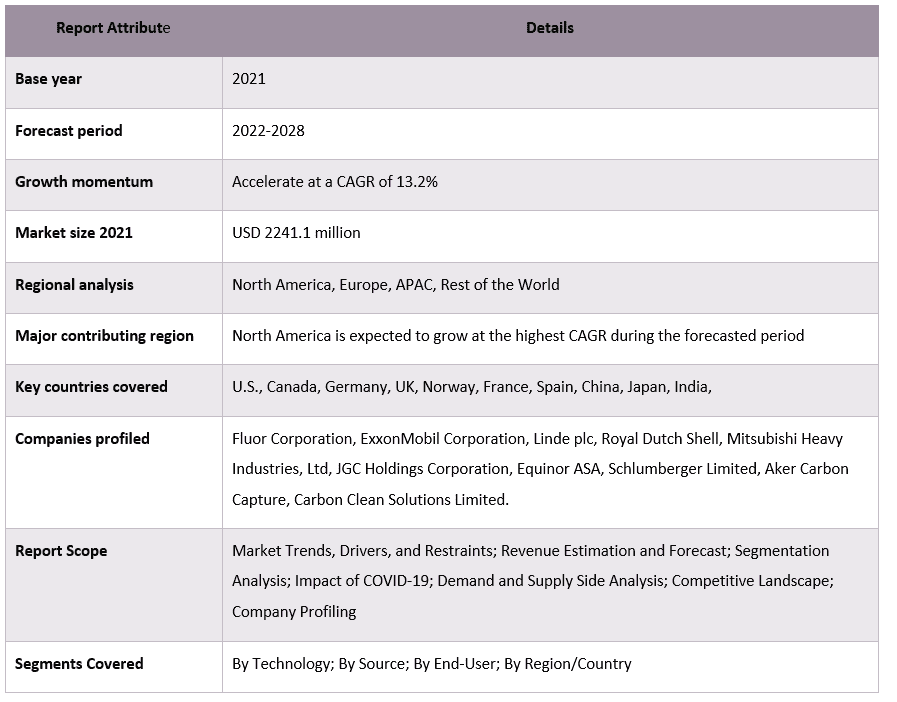
"Северная Америка доминировала на рынке Carbon Capture, Utilization, and Storage в 2021 году"
Северная Америка приобрела значительную долю рынка CCUS и, как ожидается, станет свидетелем значительного среднегодового темпа роста в прогнозируемый период. Это в основном связано с тем, что многие операционные проекты CCUS реализуются либо в Канаде, либо в Соединенных Штатах. Более того, благоприятная государственная политика, правила и инвестиции в достижение целевых показателей нулевых выбросов стимулируют рынок. Кроме того, различные текущие проекты в регионе также ускоряют рыночный спрос на CCUS. Например: Petra Nova - это установка для улавливания углерода, расположенная в Техасе, США. Она улавливает углекислый газ (CO2) с угольной электростанции и хранит его под землей. Установка может улавливать до 1,6 миллиона метрических тонн CO2 в год.
Причины купить этот отчет:
- Исследование включает в себя анализ размера и прогнозирования рынка, подтвержденный аутентифицированными ключевыми экспертами отрасли.
- В отчете представлен краткий обзор общих показателей отрасли с одного взгляда.
- Отчет охватывает углубленный анализ видных представителей отрасли с основным акцентом на ключевые финансовые показатели бизнеса, портфели продуктов, стратегии расширения и последние разработки.
- Подробное изучение драйверов, ограничений, ключевых тенденций и возможностей, преобладающих в отрасли.
- Исследование всесторонне охватывает рынок по различным сегментам.
- Глубокий анализ отрасли на региональном уровне.
Варианты настройки:
Глобальный рынок Carbon Capture, Utilization, and Storage может быть дополнительно настроен в соответствии с требованиями или любым другим сегментом рынка. Кроме того, UMI понимает, что у вас могут быть свои собственные бизнес-потребности, поэтому не стесняйтесь обращаться к нам, чтобы получить отчет, который полностью соответствует вашим требованиям.
Содержание
Методология исследования рынка улавливания, утилизации и хранения углерода (2022-2028 гг.)
Анализ исторического рынка, оценка текущего рынка и прогнозирование будущего рынка глобального рынка улавливания, утилизации и хранения углерода были тремя основными этапами, предпринятыми для создания и анализа внедрения улавливания, утилизации и хранения углерода в основных регионах мира. Было проведено исчерпывающее вторичное исследование для сбора исторических рыночных данных и оценки текущего размера рынка. Во-вторых, для подтверждения этих выводов было принято во внимание множество результатов и предположений. Кроме того, были проведены исчерпывающие первичные интервью с отраслевыми экспертами по всей цепочке создания стоимости глобального рынка улавливания, утилизации и хранения углерода. После предположения и подтверждения рыночных данных посредством первичных интервью мы использовали подход сверху вниз/снизу вверх для прогнозирования полного размера рынка. После этого были приняты методы разбивки рынка и триангуляции данных для оценки и анализа размера рынка сегментов и подсегментов отрасли. Подробная методология описана ниже:
Анализ исторического размера рынка
Этап 1: Углубленное изучение вторичных источников:
Было проведено подробное вторичное исследование для получения исторических данных о размере рынка улавливания, утилизации и хранения углерода из внутренних источников компании, таких как годовые отчеты и финансовая отчетность, презентации результатов деятельности, пресс-релизы и т. д., и внешних источников, включая журналы, новости и статьи, правительственные публикации, публикации конкурентов, отраслевые отчеты, сторонние базы данных и другие надежные публикации.
Этап 2: Сегментация рынка:
После получения исторических данных о размере рынка улавливания, утилизации и хранения углерода мы провели подробный вторичный анализ для сбора исторических рыночных данных и доли различных сегментов и подсегментов для основных регионов. Основные сегменты, включенные в отчет, — это технология, источник и применение. Был проведен дальнейший анализ на уровне стран для оценки общего внедрения моделей тестирования в этом регионе.
Этап 3: Факторный анализ:
После получения исторических данных о размере рынка различных сегментов и подсегментов мы провели подробный факторный анализ для оценки текущего размера рынка улавливания, утилизации и хранения углерода. Кроме того, мы провели факторный анализ с использованием зависимых и независимых переменных, таких как технология, источник и применение улавливания, утилизации и хранения углерода. Был проведен тщательный анализ сценариев спроса и предложения с учетом ведущих партнерств, слияний и поглощений, расширения бизнеса и запуска продуктов в секторе улавливания, утилизации и хранения углерода по всему миру.
Оценка и прогноз текущего размера рынка
Определение текущего размера рынка: На основе действенных выводов, полученных на основе вышеуказанных 3 этапов, мы пришли к текущему размеру рынка, ключевым игрокам на глобальном рынке улавливания, утилизации и хранения углерода, а также рыночным долям сегментов. Все необходимые процентные доли и разбивки рынка были определены с использованием вышеупомянутого вторичного подхода и были проверены посредством первичных интервью.
Оценка и прогнозирование: Для оценки и прогнозирования рынка различным факторам были присвоены веса, включая движущие силы и тенденции, ограничения и возможности, доступные для заинтересованных сторон. После анализа этих факторов были применены соответствующие методы прогнозирования, то есть подход сверху вниз/снизу вверх, чтобы получить рыночный прогноз на 2028 год для различных сегментов и подсегментов на основных рынках по всему миру. Методология исследования, принятая для оценки размера рынка, включает в себя:
- Размер рынка отрасли с точки зрения выручки (в долларах США) и темпы внедрения улавливания, утилизации и хранения углерода на основных рынках внутри страны
- Все процентные доли, разбивки и разбивки рыночных сегментов и подсегментов
- Ключевые игроки на глобальном рынке улавливания, утилизации и хранения углерода с точки зрения предлагаемых технологий. Кроме того, стратегии роста, принятые этими игроками для конкуренции на быстрорастущем рынке
Проверка размера и доли рынка
Первичное исследование: Были проведены углубленные интервью с ключевыми лидерами общественного мнения (KOL), включая руководителей высшего звена (CXO/вице-президенты, руководители отдела продаж, руководители отдела маркетинга, руководители операционного отдела, региональные руководители, руководители стран и т. д.) в основных регионах. Затем результаты первичных исследований были обобщены и проведен статистический анализ для доказательства заявленной гипотезы. Информация, полученная в результате первичных исследований, была объединена с вторичными данными, что превратило информацию в действенные выводы.
Разделение участников первичного исследования по разным регионам
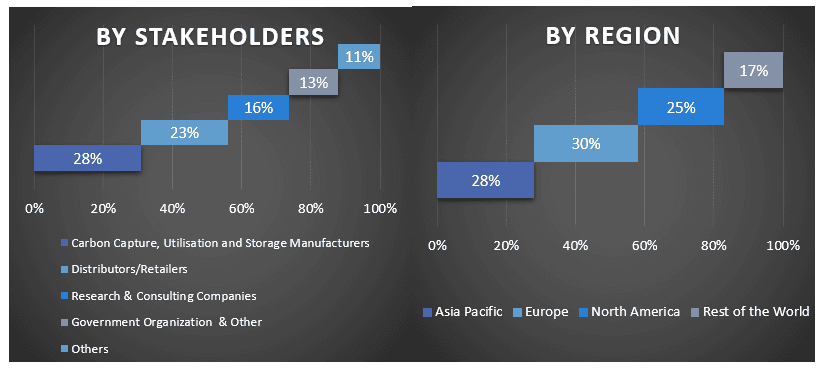
Инжиниринг рынка
Метод триангуляции данных был использован для завершения общей оценки рынка и получения точных статистических данных для каждого сегмента и подсегмента глобального рынка улавливания, утилизации и хранения углерода. Данные были разделены на несколько сегментов и подсегментов после изучения различных параметров и тенденций в областях технологий, источников и применения на глобальном рынке улавливания, утилизации и хранения углерода.
Основная цель исследования глобального рынка улавливания, утилизации и хранения углерода
В исследовании были точно определены текущие и будущие рыночные тенденции глобального рынка улавливания, утилизации и хранения углерода. Инвесторы могут получить стратегические сведения, чтобы основывать свои решения об инвестициях на качественном и количественном анализе, выполненном в исследовании. Текущие и будущие рыночные тенденции определили общую привлекательность рынка на региональном уровне, предоставив промышленным участникам платформу для использования неиспользованного рынка и получения выгоды от преимущества первопроходца. Другие количественные цели исследований включают:
- Анализ текущего и прогнозного размера рынка улавливания, утилизации и хранения углерода с точки зрения стоимости (в долларах США). Кроме того, анализ текущего и прогнозного размера рынка различных сегментов и подсегментов
- Сегменты в исследовании включают области технологий, источников и применения.
- Определение и анализ нормативно-правовой базы для отрасли улавливания, утилизации и хранения углерода
- Анализ цепочки создания стоимости с участием различных посредников, а также анализ поведения клиентов и конкурентов в отрасли
- Анализ текущего и прогнозного размера рынка улавливания, утилизации и хранения углерода для основного региона
- Основные страны регионов, исследованные в отчете, включают Азиатско-Тихоокеанский регион, Европу, Северную Америку и остальной мир.
- Профили компаний рынка улавливания, утилизации и хранения углерода и стратегии роста, принятые участниками рынка для поддержания устойчивости на быстрорастущем рынке
- Углубленный анализ отрасли на региональном уровне
Связанные Отчеты
Клиенты, купившие этот товар, также купили




